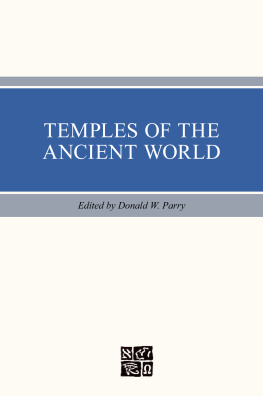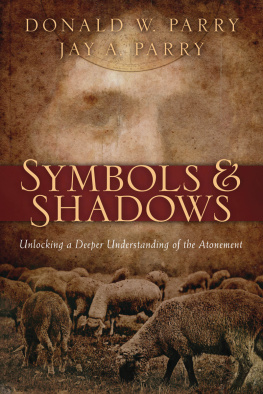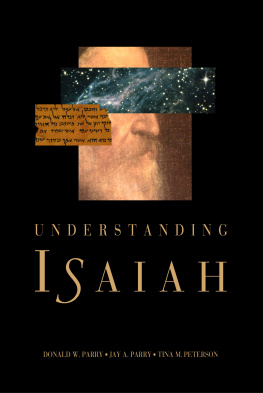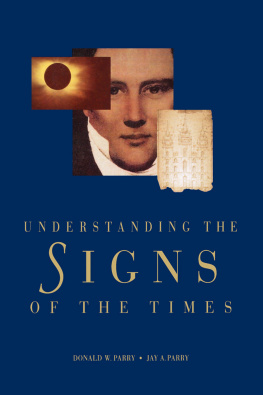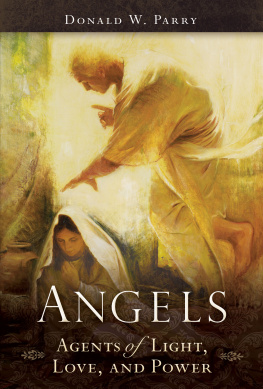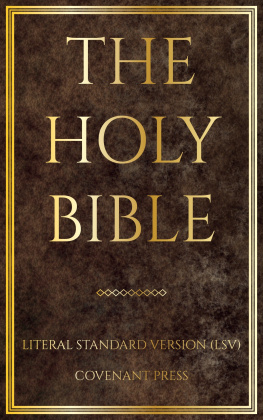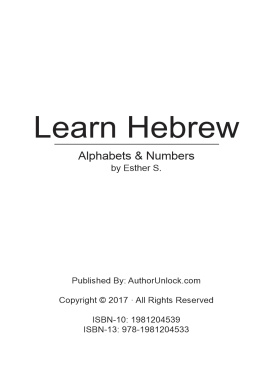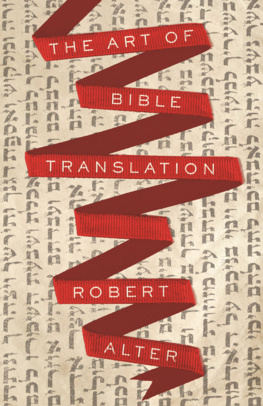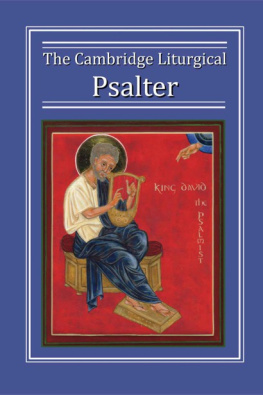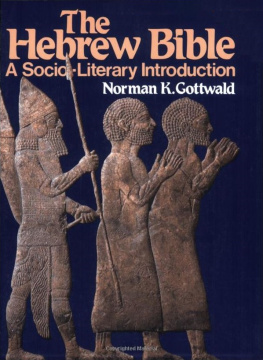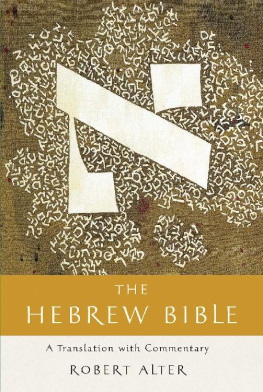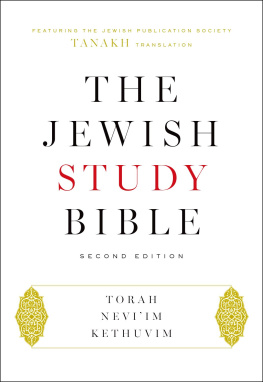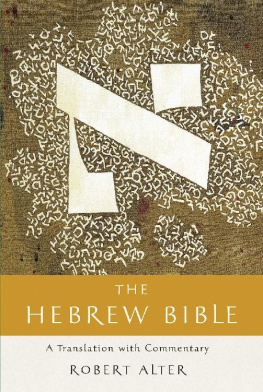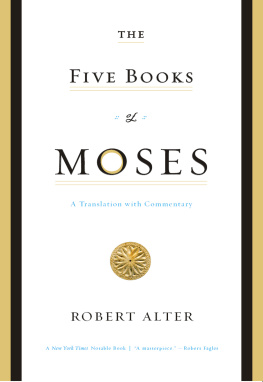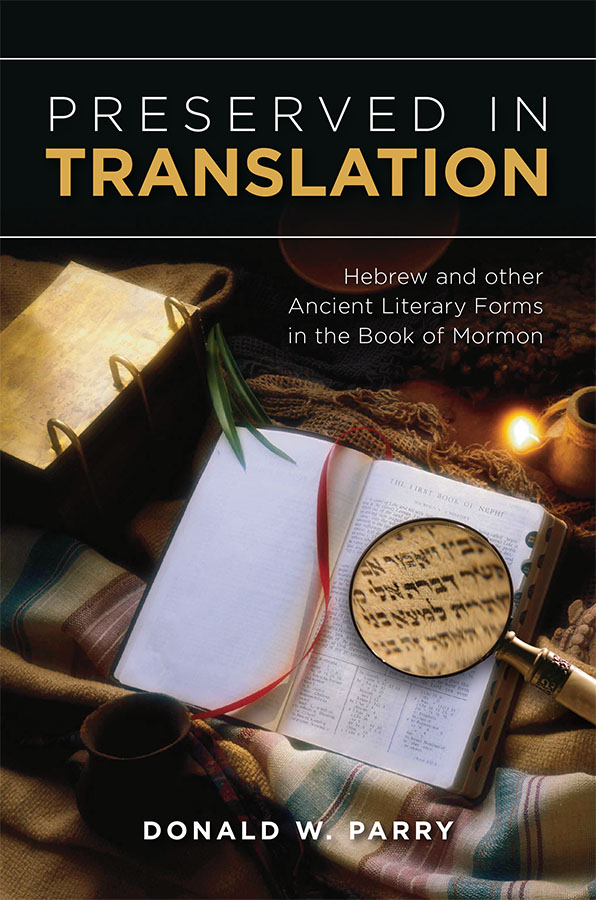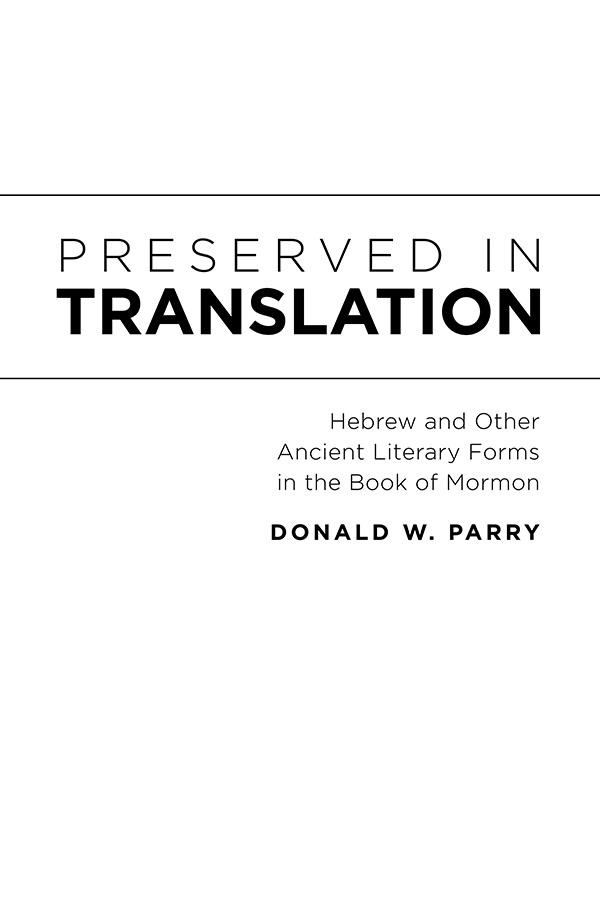Published by the Religious Studies Center, Brigham Young University, Provo, Utah, in cooperation with Deseret Book Company, Salt Lake City. Visit us at rsc.byu.edu. Deseret Book is a registered trademark of Deseret Book Company. Visit us at DeseretBook.com.
2020 by Brigham Young University. All rights reserved.
Printed in the United States of America by Sheridan Books, Inc.
Any uses of this material beyond those allowed by the exemptions in US copyright law, such as section 107, Fair Use, and section 108, Library Copying, require the written permission of the publisher, Religious Studies Center, 185 HGB, Brigham Young University, Provo, UT 84602. The views expressed herein are the responsibility of the authors and do not necessarily represent the position of Brigham Young University or the Religious Studies Center.
Cover and interior design by Emily V. Strong.
ISBN: 9781944394950 | eISBN: 9781629739694
Library of Congress Cataloging-in-Publication Data
Names: Parry, Donald W., author.
Title: Preserved in translation : Hebrew and other ancient literary forms in the Book of Mormon / Donald W. Parry.
Description: Provo : Religious Studies Center, Brigham Young University, [2020] | Includes bibliographical references and index. | Summary: "This book is an introduction to Hebraisms and Hebrew-like literary forms in the Book of Mormon that have persisted in the English translation of the text. More than two dozen such elements are identified, discussed, and related to corresponding forms found in the Hebrew Bible and in the ancient Near East. The author demonstrates that the presence of these underlying literary forms is consistent with the Book of Mormon's claimed ancient Near Eastern origins and attests the accuracy of its translation and the inspiration of its translator" Provided by publisher.
Identifiers: LCCN 2019058169 | ISBN 9781944394950 (hardcover)
Subjects: LCSH: Book of MormonLanguage, style. | Book of
MormonTranslating. | Hebrew languageSyntax.
Classification: LCC BX8627 .P2775 2020 | DDC 289.3/22dc23
LC record available at https://lccn.loc.gov/2019058169
Contents
Preface
Vital Messages of the Book of Mormon
I feel strongly that my own scholarly research of the Book of Mormon must never lose sight of the remarkable spiritual messages within its pages that must be given primacy of place in heart and mind. For this reason, I want to call attention to three eternal, far-reaching matters before I focus on Hebraisms and other ancient literary forms in the Book of Mormon. At the end of this book I return to this devotional focus in an effort to balance the findings of linguistic inquiry, as intriguing as they may be, with what I hope readers will receive as the greater, spiritual wonders of the inexhaustible Book of Mormon.
The Book of Mormon focuses on Jesus Christ . In very significant ways, the Book of Mormon is centered on Jesus Christ and his atonement. Of all the books marvelous teachings, those that pertain to Jesus Christ are the most vital for a life of happiness and purpose with faith in a glorious future. Moreover, the Book of Mormon is an indispensable witness of Jesus Christ and his atonement.
The Holy Ghost witnesses that the Book of Mormon is, verily, the word of God. The greatest and most powerful witness of the Book of Mormon is the Holy Ghost. As a member of the Godhead, he comprehends and bears testimony of this scriptural record. If we sincerely and earnestly seek a witness of it, the Holy Ghost will reveal to us that it is true (see Moroni 10:45). Without divine assistance, we are unable to comprehend the things of God; such things must be spiritually discerned through the power of the Holy Ghost. As Paul explained,
Now we have received, not the spirit of the world, but the spirit which is of God; that we might know the things that are freely given to us of God. Which things also we speak, not in the words which mans wisdom teacheth, but which the Holy Ghost teacheth; comparing spiritual things with spiritual. But the natural man receiveth not the things of the Spirit of God: for they are foolishness unto him: neither can he know them, because they are spiritually discerned. (1 Corinthians 2:1214)
In the end, an abiding testimony of the Book of Mormon comes through the power of the Holy Ghostand through no other source.
The Book of Mormon transforms lives. President Russell M. Nelson shared his deep conviction when he taught, The Book of Mormon stands as another testament of Jesus Christ. The power of its message will transform the lives of all who earnestly study its precious pages. There is no hint of overstatement in saying that the Book of Mormon has a major role in the history of the world in bringing souls to Christ.
My Personal Academic Journey
My academic study of the Hebrew Bible began in the 1980s when I enrolled in several courses at Brigham Young University. During this period, I was trained by one of the preeminent Hebrew Bible scholars in the world: Professor Stephen D. Ricks. He, along with other specialists, taught me Biblical Hebrew (the Hebrew of the Old Testament), Qumran Hebrew (the Hebrew of the Dead Sea Scrolls), Mishnaic Hebrew (the Hebrew of the Mishnah), and Modern Hebrew (the language of those who live in Israel). After completing those studies, I enrolled at the Hebrew University of Jerusalem, where I continued my study of Hebrew. During this time in Israel, I devoted scant free time to also studying Hebrew structures, poetry, and Hebraisms in the Book of Mormon. With a certain level of methodological rigor, I read and marked up a copy of the Book of Mormon with my findings. I was persuaded then, and I remain convinced now, that the Book of Mormon contains hundreds of Hebraisms and Hebrew-like forms that survived translation into English.
The Great Isaiah Scroll
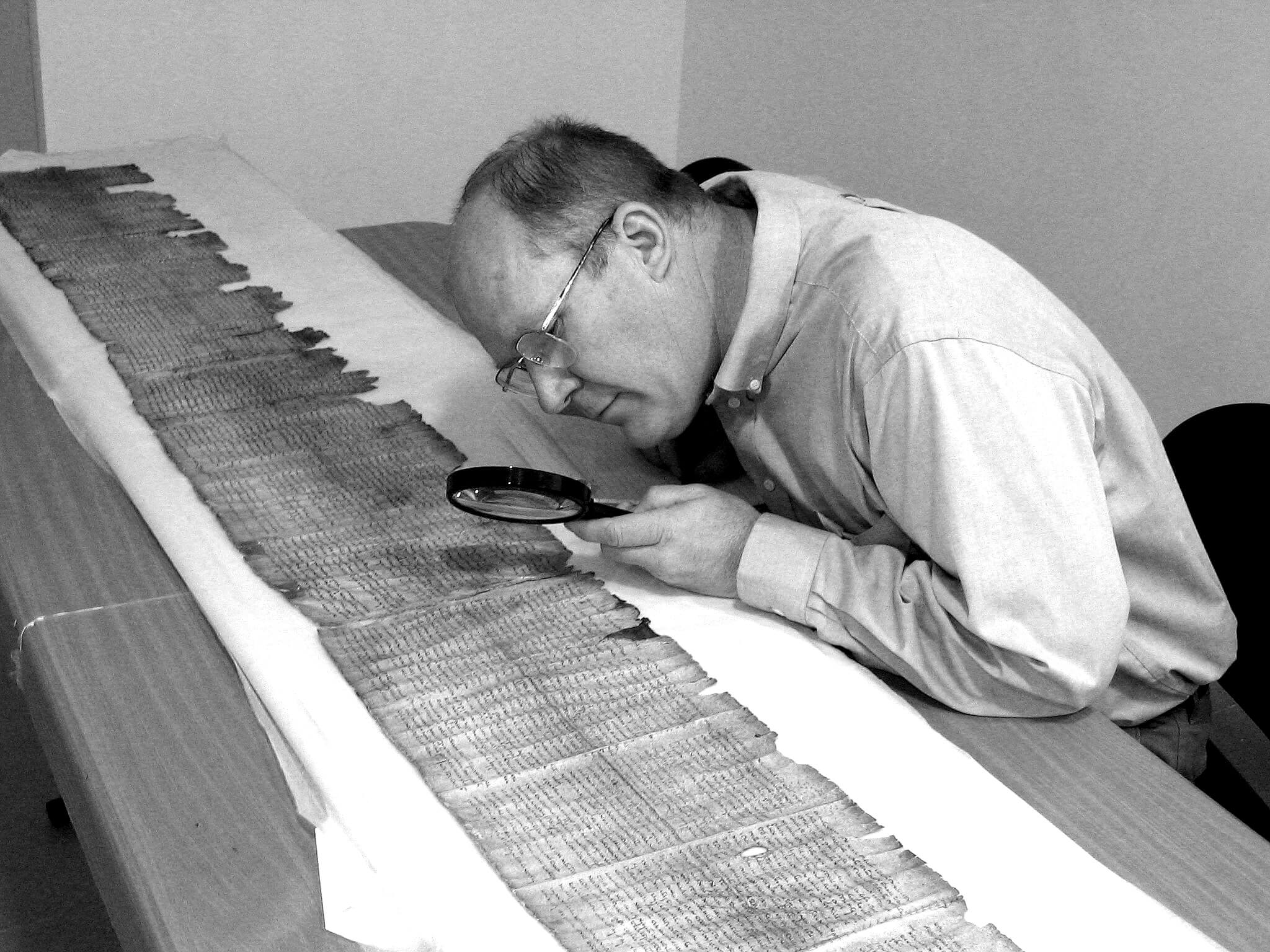
Donald W. Parry studies the Great Isaiah Scroll in the museum vault of the Shrine of the Book Museum, Jerusalem, Israel. This scroll, written in Hebrew, is perhaps the best-known biblical scroll found among the Dead Sea Scrolls. It was one of the initial scrolls found in Qumran Cave 1 in 1947. It was wrapped in a linen cloth and stored in a clay jar. It consists of seventeen pieces of sheepskin sewn together into a single scroll and shows signs of being well used before it was stored away. The scroll comprises fifty-four columns of text that vary in width and average about twenty-nine lines of text per column. Measuring almost twenty-four feet in length and about ten inches in height, this scroll is the longest of the Qumran biblical scrolls. As such, it presents a view of what biblical manuscripts looked like at the end of the Second Temple era, about a century before the birth of Jesus Christ. Parrys latest book for academia, titled Exploring the Isaiah Scrolls and Their Textual Variants (Leiden, The Netherlands: E. J. Brill, 2020), deals with this scroll.
Over many years I have published a variety of publications on Book of Mormon Hebraisms and Hebrew-like structures (see Works Cited herein), all the while fine-tuning my views and gaining additional knowledgeprecept upon precept and line upon line (Isaiah 28:10). My first publication on the topic The Book of Mormon Text Reformatted according to Parallelistic Patterns (1992)received very modest distribution (in fact, the initial print run was only six copies!). Subsequently, I expanded and fine-tuned that early study under the title Poetic Parallelisms in the Book of Mormon .


